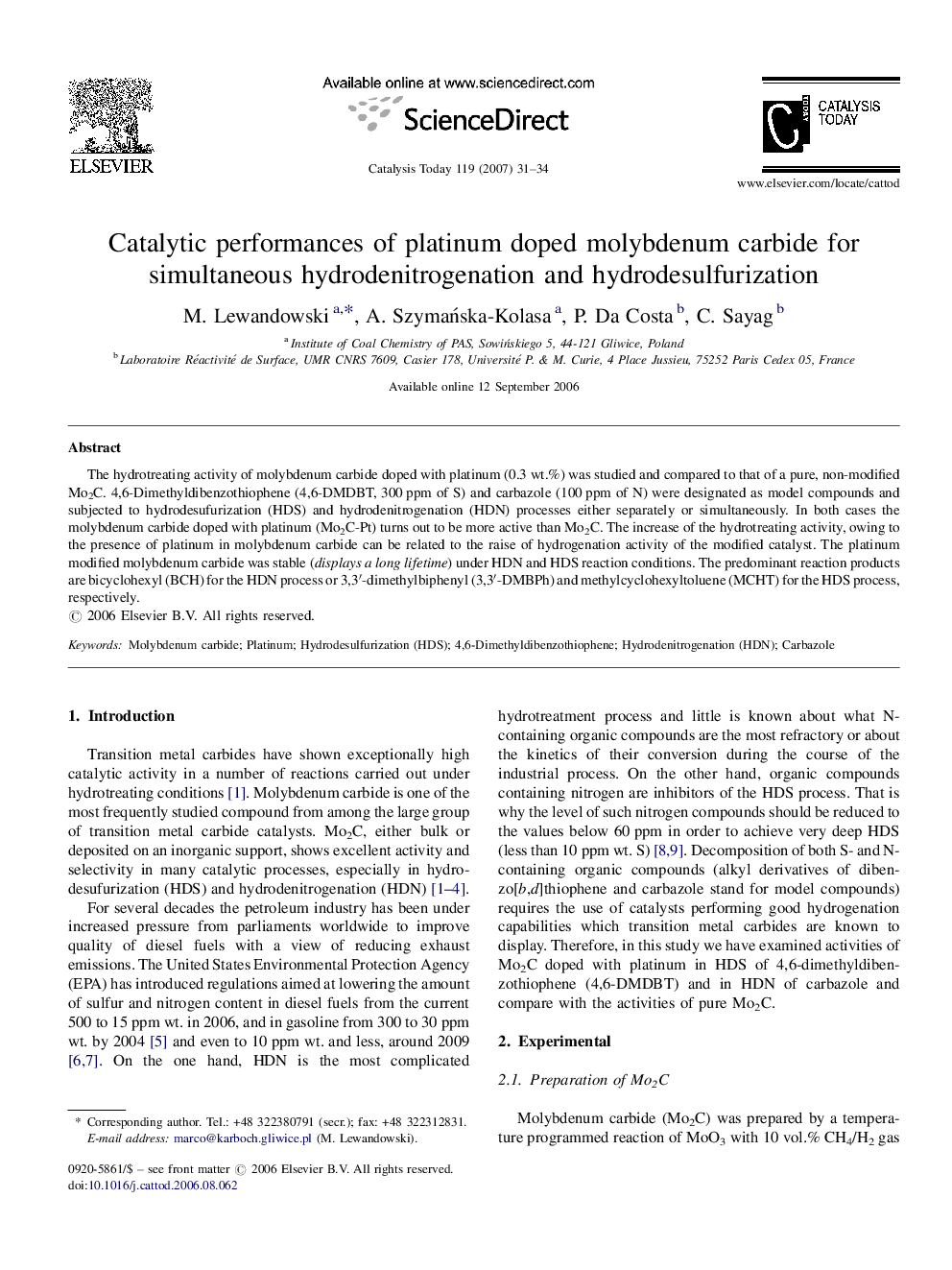| Article ID | Journal | Published Year | Pages | File Type |
|---|---|---|---|---|
| 58140 | Catalysis Today | 2007 | 4 Pages |
The hydrotreating activity of molybdenum carbide doped with platinum (0.3 wt.%) was studied and compared to that of a pure, non-modified Mo2C. 4,6-Dimethyldibenzothiophene (4,6-DMDBT, 300 ppm of S) and carbazole (100 ppm of N) were designated as model compounds and subjected to hydrodesufurization (HDS) and hydrodenitrogenation (HDN) processes either separately or simultaneously. In both cases the molybdenum carbide doped with platinum (Mo2C-Pt) turns out to be more active than Mo2C. The increase of the hydrotreating activity, owing to the presence of platinum in molybdenum carbide can be related to the raise of hydrogenation activity of the modified catalyst. The platinum modified molybdenum carbide was stable (displays a long lifetime) under HDN and HDS reaction conditions. The predominant reaction products are bicyclohexyl (BCH) for the HDN process or 3,3′-dimethylbiphenyl (3,3′-DMBPh) and methylcyclohexyltoluene (MCHT) for the HDS process, respectively.
